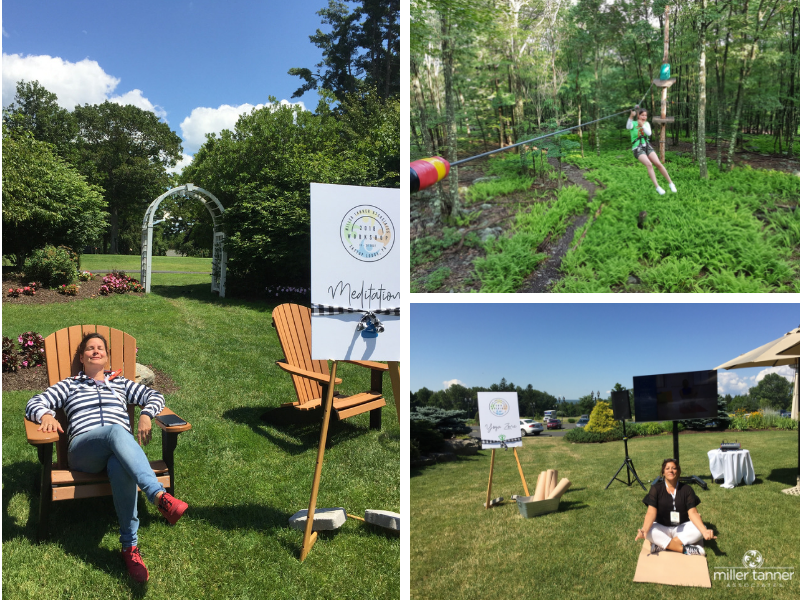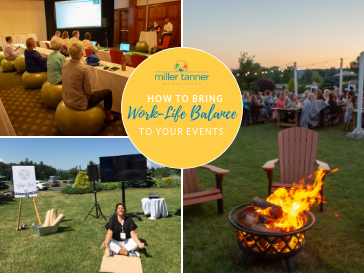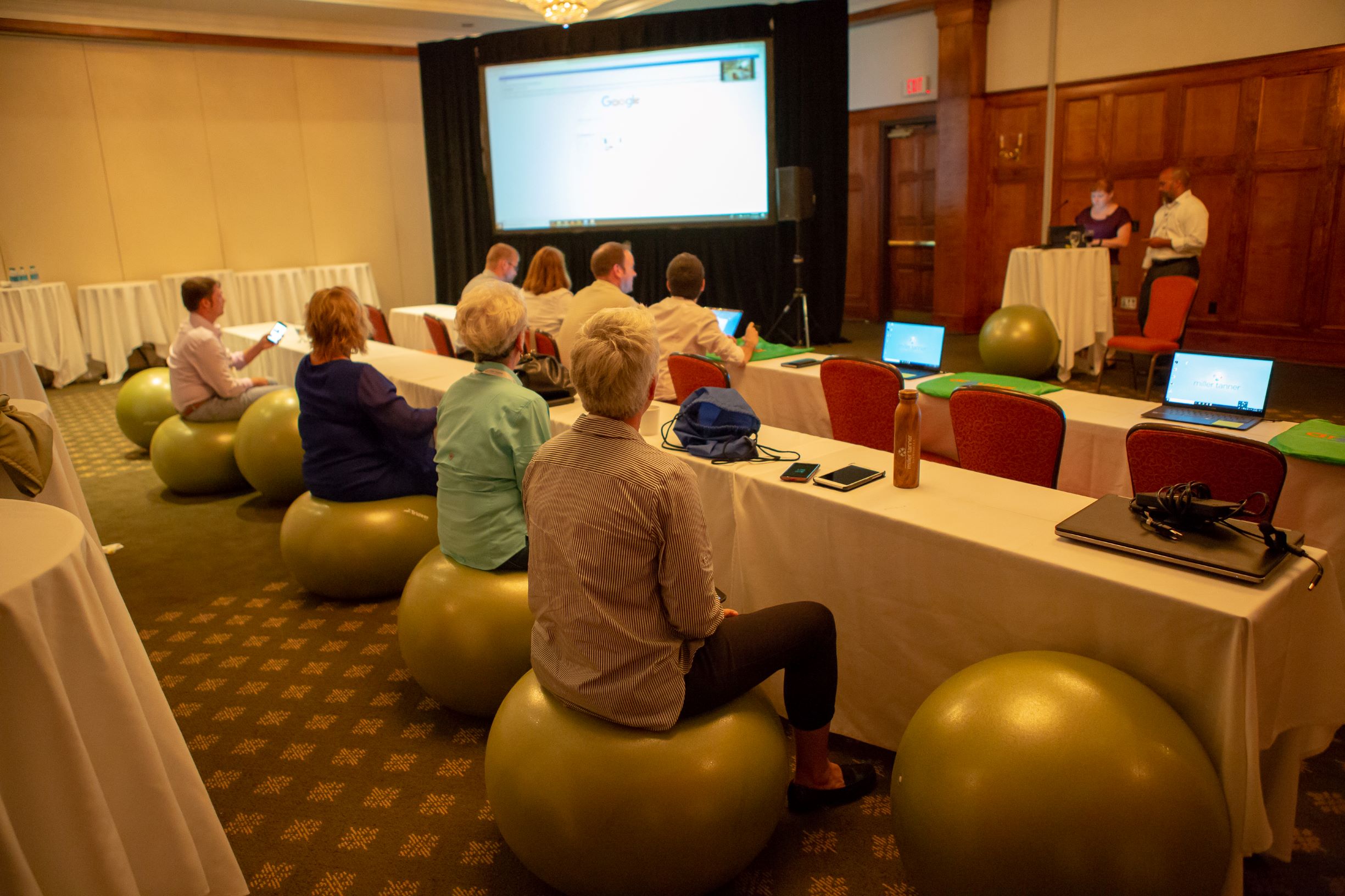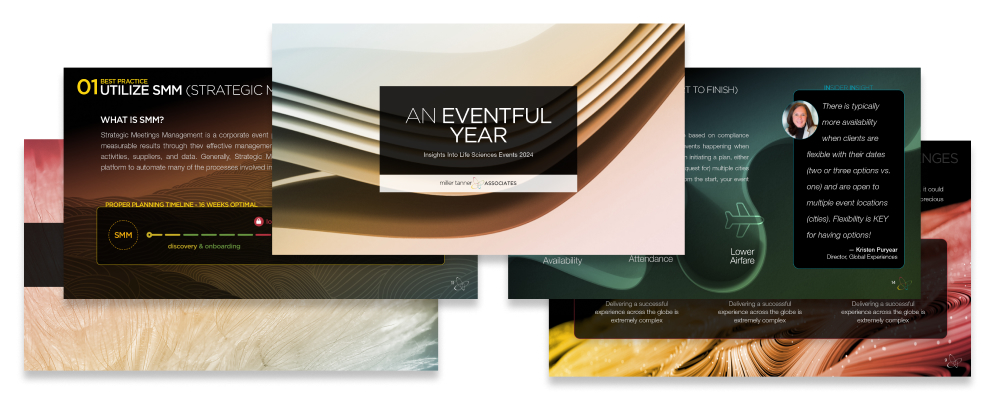Why Work-life Balance is Important
The U.S. ranks in the bottom 20 percent for work-life balance among the 38 countries surveyed in a report compiled by Family Living Today and Now Sourcing. On average, people spend nine and a half hours a day on “personal care” and that includes everything from sleep to showering. Nine and a half hours a day is not much when you consider that eight hours of sleep is optimal.
Because of technology, it has becoming increasingly difficult to separate work from personal life making it a challenge for employees to achieve a healthy work-life balance. Not only is this balance necessary for mental health and personal growth, but it also creates a more desirable working environment and happier employees. “Put simply, if your people don’t view work as a chore, then they will work harder, make fewer mistakes and are more likely to become advocates for your brand,” according to the Happiness Index.
Events and meetings are a prime opportunity to introduce and practice work-life balance principles within your team. Work-life balance was one of the focused themes of our MTA Workshop this year. Although we were on site together for intensive training, we also sought to put into practice these important concepts.
How can you bring more work-life balance to your event?
1. Choose a venue property that has on-site activities.

Introduce your team to work-life balance activities like meditation, yoga, or zip-lining.
If you’d like to inject some work-life balance practices into your next meeting or corporate event, then choose a venue property that can easily accommodate. Lots of venues offer more of a resort-type atmosphere with relaxing activities available right on property. This is natural fit for companies looking for leisurely activities to offer their teams. Consider a venue located in close proximity to hiking or walking trails, or that offer other outdoor activities such as golfing or biking. Also, team-building opportunities like lawn games, zip-lining, and even evening marshmallow roasts, offer a perfect relaxed vibe that reinforces the work-life balance practice.
2. Take your breaks outdoors.
Instead of opting for meeting breaks within the confines of the hotel hallways, take your breaks outdoors for an extra dose of vitamin D and fresh air to reboot in between event sessions. Offer healthy snack options during breaks and create outdoor stations designated for relaxing and meditating, yoga, and conversation. Strategically plan one large break per day to allow time for attendees to enjoy the property’s on-site activities and to reinforce the importance of self care. Your attendees will have an opportunity to recharge during the breaks with better focus during your meeting sessions.
3. Experiment with healthy lifestyle products.
Give your attendees the opportunity to experiment with products that support a healthier lifestyle. At our Workshop, we set up a creative workspace and brought in alternative, ergonomic work stations for our team to test, including ball chairs and stand-up desks. Yoga instruction was also available on the lawn and in the hallway during breaks for those who needed to stretch and unwind between sessions.
4. Select gifts that keep giving.
Be intentional about the gifts provided to your attendees. Select gifts that support a healthy work-life balance. Some ideas might include headphones and a device for listening to music or a stainless steel water bottle, travel snacks, and a hat to encourage heading into the hills for a nature walk. Whether simple or elaborate, these gifts can be tools for bringing more balance.
5. Include time for reflection.
Create activities that cause pause and reflection. Putting pen to paper is a great way to encourage reflection whether it’s through personal journaling or by inspiring others with words of affirmation. Set the stage for work-life balance by asking your teams to inscribe their dreams, share what makes them laugh, and inspire others to do the same.
6. Don’t forget CSR.
Corporate Social Responsibility CSR activities have a great effect of bringing balance while creating a sense of well-being among participants. CSR can be hosted off site but if time is a factor, you can easily incorporate a CSR project into the meeting breaks. Our CSR project this year involved stuffing backpacks and painting “designer” sneakers, which were donated to the local Boys and Girls Club. Attendees were able to easily jump in and help at their availability during breaks throughout the week.
7. Have presenters share their stories.

Our team painted “designer” footwear to be donated to the local Boys and Girls Club.
If your event’s presentations are led by company leadership or by guest speakers, their personal stories of work-life balance successes can have a profound effect on the attendees. In our post-meeting survey, attendees mentioned the added value of having their department leaders and our CEO share how they themselves personally seek work-life balance. According to the survey, these personal stories inspired the individual audience members to do the same.
8. Measure the results.
Take a poll before your meeting and after to get a clearer picture of how impactful your efforts were in achieving work-life balance practices. Our pre- and post- surveys showed a significant increase in understanding the importance of work-life balance and implementing change. In fact, 98% of those polled plan to put more focused time into creating personal work-life balance. Poll results can offer valuable insight into the overall work culture of your team and help address issues of imbalance.
Our team can help you integrate work-life balance concepts into your event or internal meeting. Contact us for more information.
- Meet MTA: Steven Garberg, Software Engineer, MTA Technology Services - September 15, 2020
- Case Study: How a Hotel Contract Cancellation Clause Resulted in Zero Penalty During Pandemic - August 20, 2020
- Virtual Events: Frequently Asked Questions - August 11, 2020




